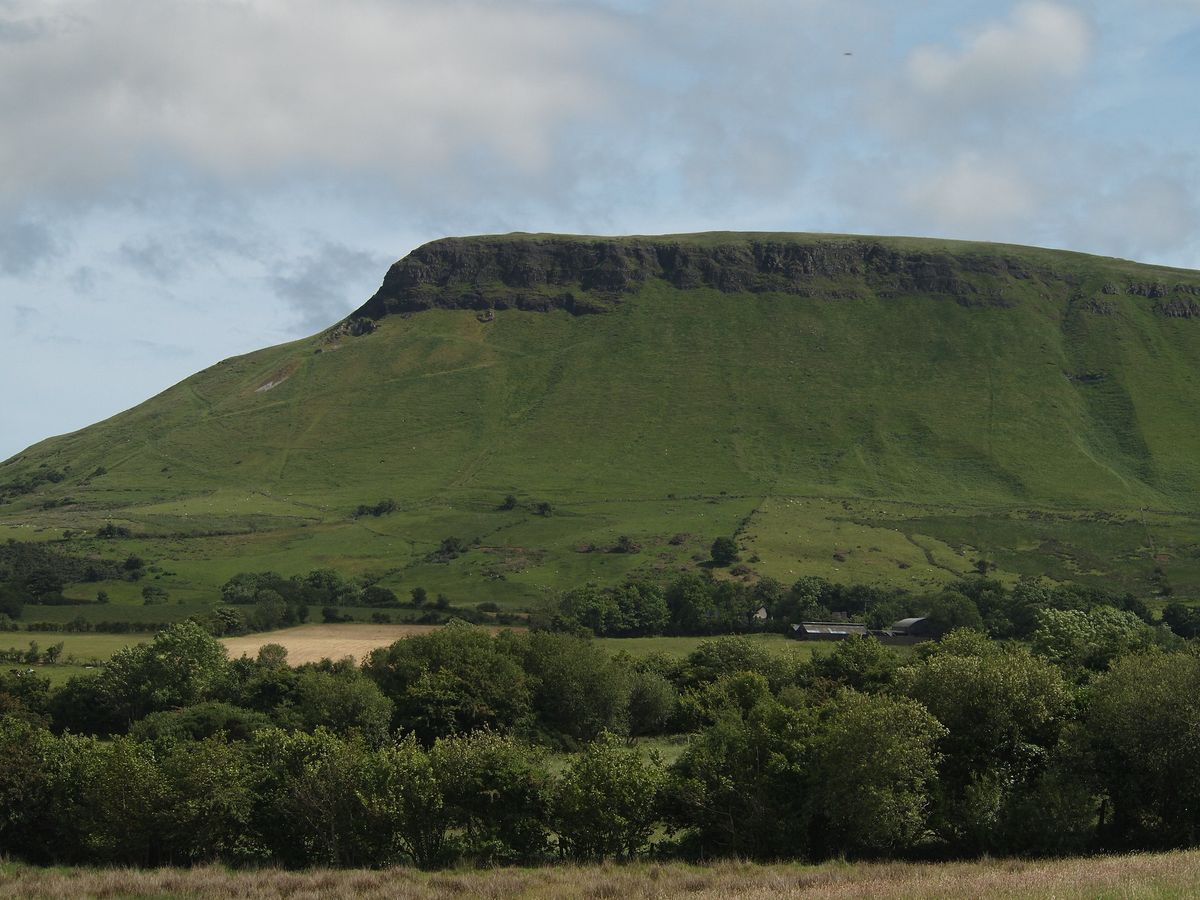Wondermondo 🢖 World 🢖 Wonders of Europe 🢖 Wonders of the United Kingdom 🢖 Wonders of Northern Ireland 🢖 Wonders of County Antrim
Territory
Wonders of County Antrim
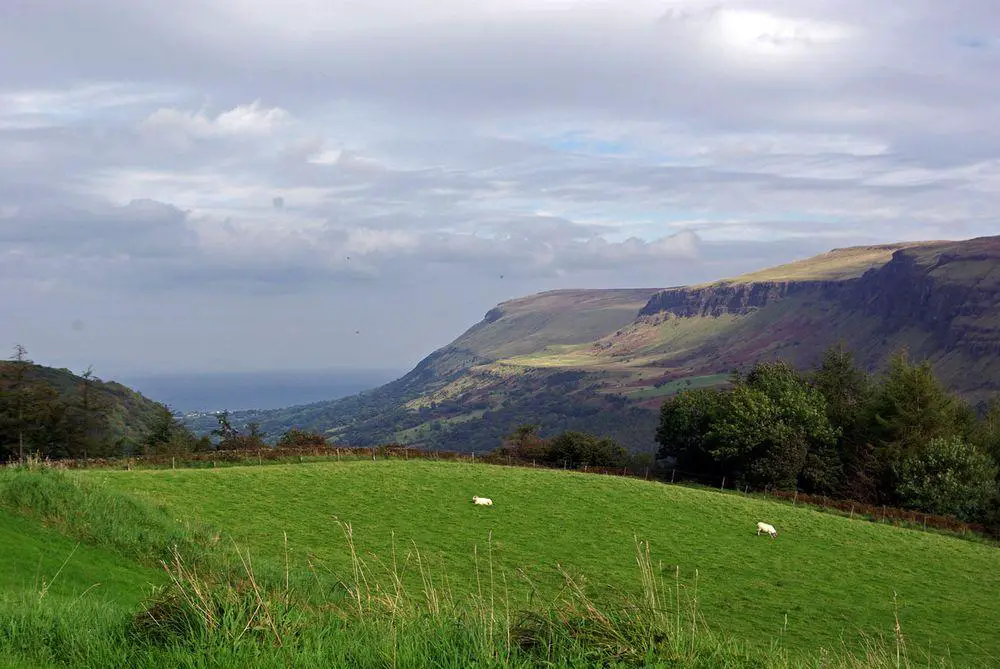
 Highlights
Highlights
The most amazing wonders of County Antrim are:
- The countless natural and historical landmarks in Glens – nine large valleys opening to the sea. Here one can see waterfalls, megaliths, old castles, meadows, and forests rich with flowers, sites of fairy and ghost legends, and nearly every other kind of wonder.
- Sea coast formations – Giant’s Causeway may be the best-known landmark of Northern Ireland, but there are numerous other interesting geological formations at the sea coast – sea stacks, caves, natural arches.
- Belfast – the metropolis of Northern Ireland has its share of interesting monuments of architecture and history.
Map with the described wonders
If you see this after your page is loaded completely, leafletJS files are missing.
 Top 25 wonders of County Antrim
Top 25 wonders of County Antrim
Geological wonders
Giant’s Causeway
Area of outstanding natural beauty, with some 40,000 interlocking basalt columns. Tops of these columns form natural stepping stones leading into the sea.
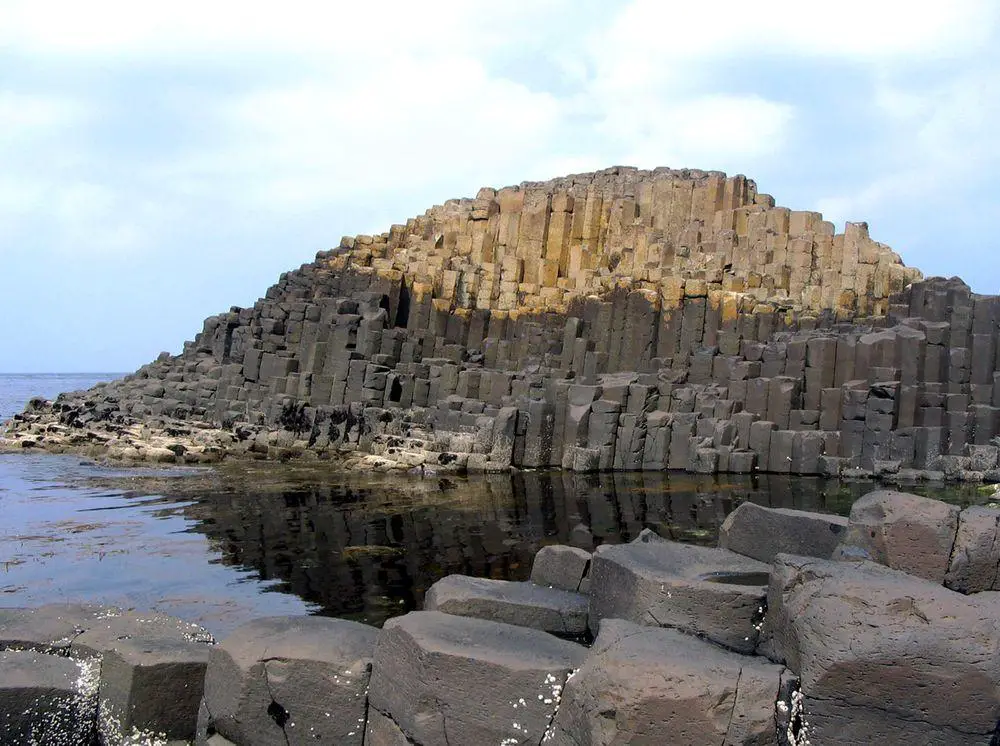
Dunkerry Grand Cave
One of the most impressive sea caves in Ireland, approximately 30 m high and 27 m wide, the depth is not known.
Portcoon Cave
Impressive and eerie sea cave next to Giant’s Causeway, some 140 m long, at least 35 m high.
Bruce’s Cave
Enormous seaside cave, approximately 140 m long, 22 m high.
Archaeological wonders
Altagore Cashel
The best preserved ancient fortification – a drystone ringwall.
The Linford Barrows
Mysterious earthworks of unknown age. Two circular mounds (13 and 16 m diameter) that are surrounded by a deep ditch and higher outer bank – similar to large stamps pressed in the earth.
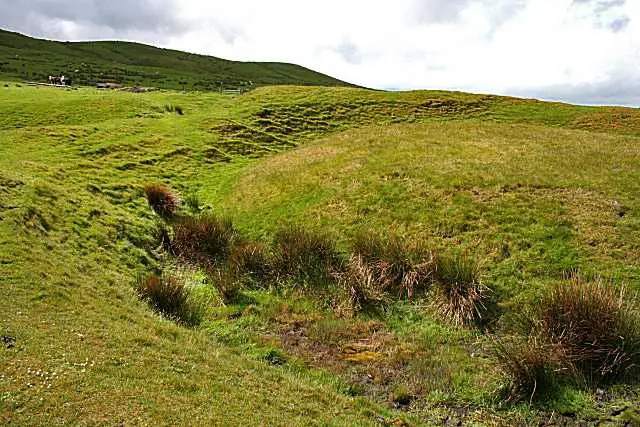
Oisín’s Grave
Megalithic monument, a burial cairn from 4000 BC. In popular legends considered to be the grave of Oisín – a celtic warrior and bard who lived around 300 AD.
Giant’s Ring in Belfast
Henge – a circular enclosure, where the bank is up to 3.5 m high, diameter – 180 m. A megalithic passage grave inside.
Architecture and legendary wonders
Carrickfergus Castle
One of the best preserved medieval structures in Ireland, constructed in 1177 by Normans, since 1210 – English castle. Castle has not been abandoned and as a result, represents a valuable monument of architecture and history. For the most part, surrounded by water.
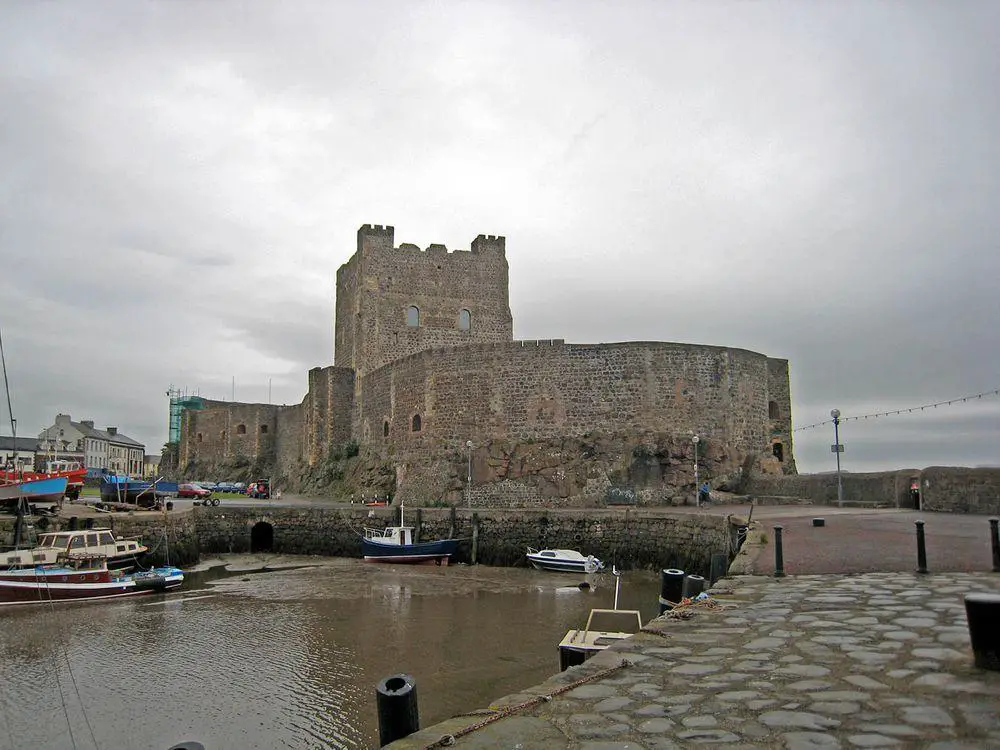
Belfast Castle
Massive stately home, built in Scottish Baronial style in 1862 – 1870 on a hill above Belfast. The building resembles a medieval castle.
Glenarm Castle
Exquisite castle, built on the site of an older castle in 1636 in Jacobean style, rebuilt in the late 18th century in Palladian style.
Dunluce Castle
Magnificent castle ruins on a promontory, overlooking the sea, accessible via a bridge. Currently visible structures were built in the early 16th century. Abandoned as the sea is washing out the cliff. Ghost stories.
The Palm House of Belfast Botanic Gardens
One of the oldest curvilinear cast iron glasshouses in the world, built in 1840. The plant house contains many unique plants including 400 years old Xanthorrhoea from Australia.
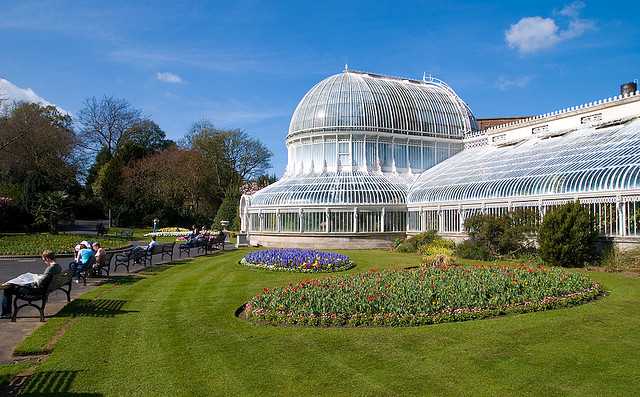
Dunseverick Castle
Ruins of a very old castle that rises above the sea on a promontory. Saint Patrick visited the castle in the 5th century AD, and important historical events have taken place here also in later times. Demolished in the 1650ies.
Tiveragh Hill and Lurigethan Hill
Two legendary fairy sites, still revered by locals and considered to have frequent supernatural sightings.
Antrim Round Tower and Antrim Bullaun Stone
Remnants of the ancient monastic settlement. The round tower was built around the 10th century AD and served as a bell tower and fortification. It is 28 m tall. Burned and abandoned in 1147.
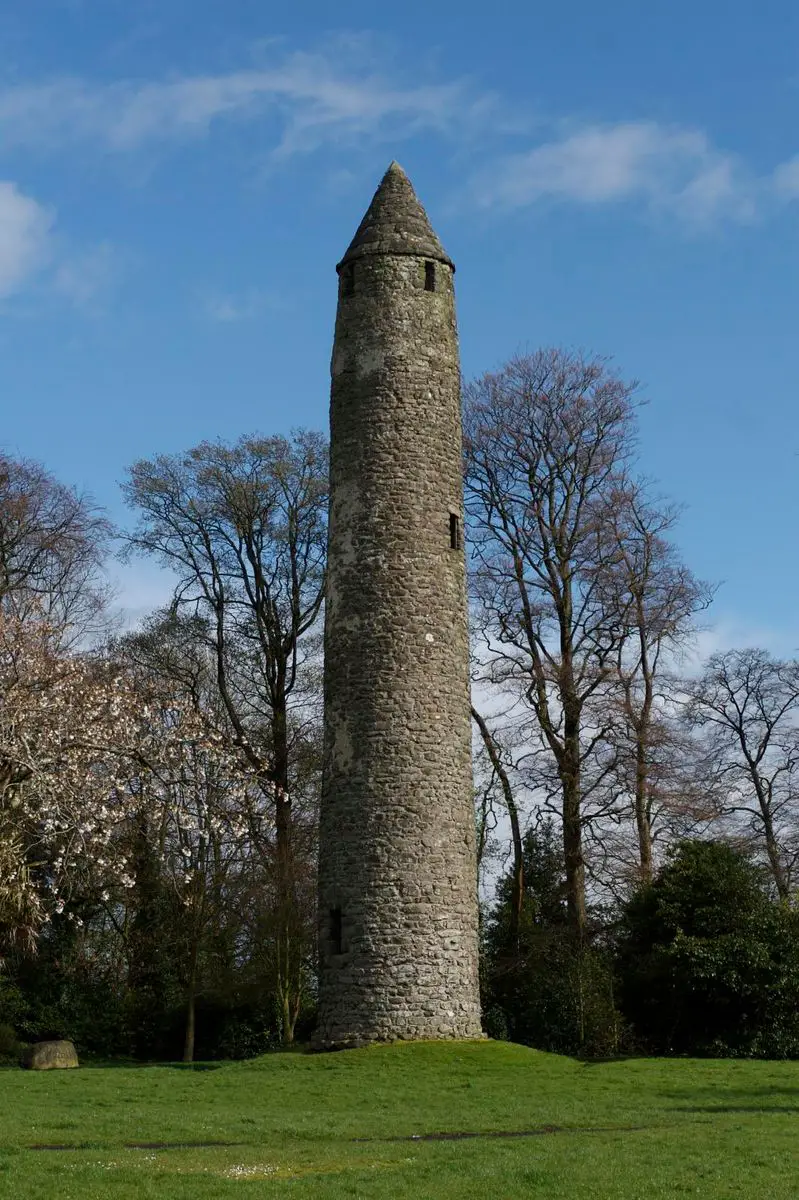
Merchant Hotel
This luxurious hotel building was constructed in the middle of the 19th century.
The main building of Belfast Queen’s University
Impressive Neo-Gothic structure, constructed in 1849.
Hillsborough Castle
Stately home, built in the 18th century in a Georgian style. Now – government residence.
Layde Church (The Layd)
Ruins of a church. Church was last built here in the 17th century, but the site has a very long history. Two Celtic crosses – including Cross Na Nagan – pagan holestone "Christianised" into a Celtic cross. Ghost stories.
Belfast Grand Opera House
This beautiful theater house was constructed in 1895 in the Oriental style.
Dalway’s Bawn
Late medieval fortification, the best preserved so-called "Bawns and Flanker Towers". Built in 1609, consists of a quadrangular fortified enclosure with three round towers.
Crown Liquor Saloon
Beautiful Victorian gin palace, refurbished in 1885. Very ornate interior.
Dundarave House
Large country house, built in 1846.
Armoy Round Tower
Medieval round tower on the site of an early Christian monastery. The monastery was established around 460 AD. The top of the tower has been lost, and now remains a 10.4 m tall base part.
 Recommended books
Recommended books
Highways and Byways in Donegal and Antrim
If you take this book with you as you travel around Donegal and the Glens of Antrim you will find that you journey not only over land but also over time. More than just about anywhere else, the landscapes of Ireland evoke the past. Viewing Donegal and the Antrim Glens through the lens of history enhances and gives resonance to every valley, mountain, and ancient building.
The Giant’s Causeway: And the North Antrim Coast
The Giant’s Causeway on Ireland’s north Antrim coast is a place where myth and science meet. For over 300 years visitors have pondered the choice between giants and geology to explain this natural and cultural wonder. From tales of the Irish giant, Finn MacCool, and his building of the huge stone causeway, to the ancient and mysterious cooling of lava to form the basalt columns, The Giant’s Causeway takes the reader on an illustrated tour of the history, folklore, people, geology, wildlife, and stunning landscape of this unique place.

